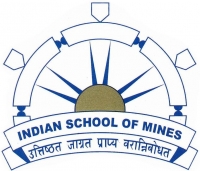/topics/sustainability
Sustainability
Climate Change and its Impact on Biodiversity-ENVIS newsletter, September 2009
Posted on 17 Jan, 2010 02:28 PM

A woman who brought toilets, education and compassion to her village - The story of Anna Lakshmi of Tamil Nadu
Posted on 23 Dec, 2009 10:29 AMPriyadarshini, or Priya to friends, wanders inquisitively around a large cement pad where a group of about thirty women and men are gathering to create a map of their village using a colored chalk powder called Rangoli.
Challenges in integrated management of water resoures - Field report from Mulbagal, Karnataka
Posted on 20 Nov, 2009 06:56 PM
In an earlier post on IUWM and interventions based on hydrological considerations, I had discussed the typologies which could define the way we intervene and address the inconsistencies in the water utility services as well as the net water availability of the region.
Direct seeding initiatives with paddy farmers in Punjab - PepsiCo India Holdings - Gurgaon
Posted on 17 Nov, 2009 05:58 PMWork taken up focussed on promoting direct seeding instead of transplantation in the paddy crop. As a result of this, about 30% reduction in water consumption was achieved covering about 1100 acres in 5 states. Farmers could also reduce their production costs by upto Rs.1400/acre.
Water conservation by industry - A case study of WIPRO Limited - Bangalore
Posted on 17 Nov, 2009 05:27 PMThe various initiatives taken up include setting up a monitoring and reporting system to keep track of the water usage, increasing the reverse osmosis plant efficiency, rainwater harvesting, treating sewage and reusing treated water and more.
Mekong River Commission looking for International Interim Development Partner and Policy Coordination Officer
Posted on 30 Oct, 2009 09:18 AMThe role of MRC is to co-ordinate and promote co-operation in all fields of sustainable development, utilization, management and conservation of the water and related resources of the Mekong Basin.
MRC Secretariat is looking for qualified candidates to fill the following post:
International Interim Development Partner and Policy
Coordination Officer
Sustainable and Ecological Sanitation - Experiences
Posted on 24 Oct, 2009 11:13 PMA consultation was organised by Arghyam Trust in September 2009, to share experiences on Sustainable and Ecological Sanitation with the Planning Commission.
Opportunities for Scholars in the Field of Sustainable Development
Posted on 13 Oct, 2009 12:34 PMScholars Program on Best Practices of Sustainable Development
National Conference on urban water management : Challenges and options, 13 Feb. 2009, Bangalore
Posted on 09 Oct, 2009 06:21 PMNATIONAL CONFERENCE ON URBAN WATER MANAGEMENT: CHALLENGES AND OPTIONS
13-15th December 2009, Bangalore, India
A National Conference on Urban Water Management: Challenges and Option is being organised on 13-15th December, 2009 in Bangalore.




